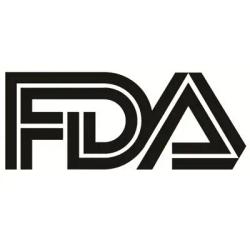
OR WAIT null SECS
When to Prescribe Epinephrine for Known Anaphylaxis Triggers, With Marcus Shaker, MD
At ACAAI 2025, Shaker highlighted evolving therapies and real-world barriers that continue to limit optimal anaphylaxis management.
At the 2025 American College of Allergy, Asthma & Immunology (ACAAI) Annual Scientific Meeting in Orlando, Florida, Marcus Shaker, MD, a professor of pediatrics and medicine at the Dartmouth Geisel School of Medicine, discussed the nuanced approach clinicians must take when managing patients with a known trigger for anaphylaxis. Shaker emphasized that no single strategy fits all cases. Effective management hinges on shared decision-making and an understanding of the patient’s individual context, history, and goals.
He illustrated this with a common scenario: a child who reacts consistently to peanut exposure, where repeated testing may not offer new insight. In such cases, he said, the clinical focus should shift from diagnosis to treatment and preparedness.
“If I were to ask you, what do you think the chances are that [a] patient's allergic to peanut, you[d] probably say 100%, right? At that point, how does testing raise that level of confidence? Those are the types of situations that I think it's important to engage families in a conversation about what their goals are,” Shaker said.
Shaker noted that today’s treatment landscape for food allergies looks very different from just a few years ago. Beyond traditional avoidance and emergency preparedness strategies, clinicians now have multiple therapeutic tools, including oral and sublingual immunotherapy, biologics such as omalizumab, and a growing range of epinephrine delivery options. He said this evolution invites richer discussions with patients and families about goals of care and management preferences.
Regarding epinephrine use, Shaker reaffirmed that patients at risk for anaphylaxis should have access to self-administered epinephrine, whether via autoinjector, nasal spray, or other formulations. However, he highlighted that real-world use remains far from optimal, despite ongoing work to bring epinephrine resources to schools and airplanes. Barriers such as inconvenience, needle fear, and lack of awareness persist.
“The question is, why do people not use epinephrine in the community? I think we're starting to scratch the surface.”
Shaker expressed optimism that emerging non-injectable epinephrine options, including nasal formulations, could improve access and adherence. He also pointed to ongoing discussions around potential over-the-counter availability of nasal epinephrine as a promising avenue to expand accessibility and public preparedness for severe allergic reactions.
“Now that we have non-injectable forms of epinephrine currently on the market and coming to market, I think it might change the discussion [on access],” Shaker said. “There's a group convening an FDA Panel Report… next month to explore these questions about over-the-counter epinephrine access. I think it's something we need to think more about.”
Shaker has no relevant reported disclosures.
References
Shaker, M. A Case of Anaphylaxis of Known Cause: When to Test, When to Prescribe Epinephrine, When to Prescribe 911. Presented at ACAAI 2025 in Orlando, Florida, on November 7, 2025.
Related Content:


